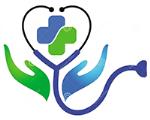
The fifth vital sign: Pain!
By Dr. Luigi NalliVital signs are a clinical measure of a person’s most basic body functions. The traditional vital signs include: body temperature, heart rate, blood pressure and respiratory rate. These signs help a healthcare professional to understand the case presentation of a patient and are essentially a measure of life.
Pain is often referred to in healthcare as ‘the fifth vital sign’ for the simple reason that in order to experience pain, you must therefore be alive. Similar to the other vital signs, pain is an important part of the case presentation, but unlike the others, often causes the most distress to the patient. We have all experienced pain and can relate that although necessary is extremely unpleasant. The symptom of pain is part of many medical conditions, ranging from simple issues such as hurt muscles to serious life-threatening illnesses such as cancer.
Pain is designed to let the individual experiencing, know that something is wrong and motivates them to withdraw and/or act. However, it is important to appreciate that the pain experience is created in the brain, specifically the limbic system, which is the centre that controls emotions. Our body continually relays information back to the brain about what it is experiencing. If that message is an uncomfortable stimulus (known as nocioception) then the
pain experience is generated by the brain to makes us aware that something is wrong. Thus, pain is a combined sensory and emotional experience associated with some potential danger.
What happens when the unpleasant stimulus continues to relay that same message over and over again? Well, this is the concept of chronic pain. Similar to learning to ride a bike where neural pathways are developed, pain can also create neural pathways that become learned and difficult to erase. This pain can exists without a stimulus and apparent healing having already occurred.
Consider the condition of phantom limb pain where individuals have lost a limb through either an accident or surgically due to a medical condition. These individuals can still experience pain in the limb that has been removed. Scientific research has identified that the reason for this phenomenon is that the corresponding area in the brain for that persons missing limb still exists and can create a cognitive perception of pain in the phantom limb.
So, if you are experiencing pain, are you doomed to experience it forever? Absolutely not! The area of healthcare devoted to pain management is extremely complex and continues to evolve daily. The best approach for any individual experiencing pain is to have a healthcare team with the knowledge and tools, supported by evidence- based medicine, to provide them with the best up to date pain management strategies. The care for pain is multifactorial and should target the physical, psychological and social aspects of the individual. There should be a pain diagnosis established and the treatment and plan of management should be rendered based on that diagnosis.
Dr. Luigi Nalli is a licensed Chiropractor with a special interest in pain management. He is a graduate of both the University of Toronto and the Canadian Memorial Chiropractic College and has further certifications from McMaster University. He is also the Clinical Director of Humber Family Chiropractic, Rehabilitation & Wellness, a multidisciplinary clinic with dozens of healthcare professionals dedicated to pain management and overall wellness. The centre’s main office is located directly across from William Osler’s Etobicoke General Hospital and is open 7 days a week. To contact Dr. Nalli or book an appointment at the clinic please call 416-744-7900 or email info@humber-family.com.













